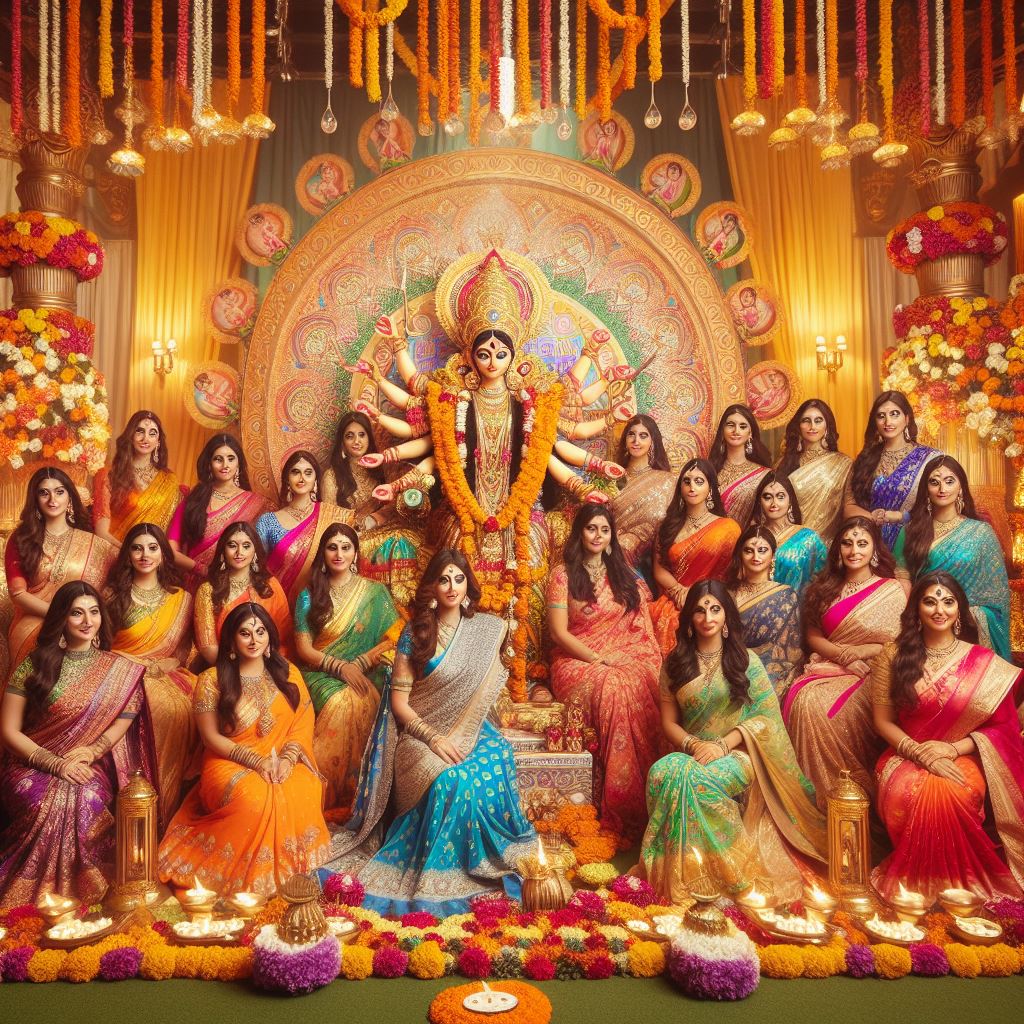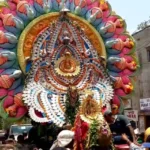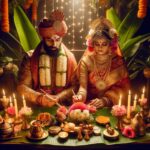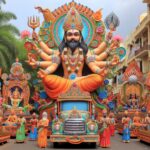Introduction:
Magha Gupt Navratri, a significant Hindu festival, marks a celestial alignment of spiritual significance. Falling in the Hindu month of Magha, typically between January and February, this nine-night festival is dedicated to the worship of the Divine Feminine. Magha Gupt Navratri holds a unique place in the hearts of devotees, providing a sacred platform to honor and invoke the blessings of Goddess Durga in her various forms. In this article, we will explore the spiritual significance, rituals, mythology, and the transformative power of Magha Gupt Navratri.
The Spiritual Significance of Magha Gupt Navratri:
Navratri, meaning “nine nights” in Sanskrit, is a festival celebrated multiple times throughout the year, each time dedicated to a different form of the Goddess Durga. Magha Gupt Navratri, observed in the month of Magha, is considered particularly auspicious. The festival symbolizes the triumph of good over evil, with the Divine Feminine energy manifesting to vanquish the forces of darkness.
Magha Gupt Navratri provides an opportunity for devotees to engage in intense spiritual practices, including fasting, prayer, and meditation. The festival is a time of deep introspection and connection with the divine, fostering a sense of purification and renewal.
Mythology of Magha Gupt Navratri:
The mythology associated with Navratri varies across regions, but a common narrative revolves around the victory of Goddess Durga over the buffalo demon Mahishasura. According to the legend, Mahishasura, a powerful demon, obtained a boon from Lord Brahma that made him nearly invincible. Armed with this boon, Mahishasura wreaked havoc in the celestial realms, causing distress to gods and humans alike.
In response to the collective plea for intervention, the Divine Trinity—Brahma, Vishnu, and Shiva—conjoined their energies, creating Goddess Durga. Endowed with celestial weapons and riding a lion, Goddess Durga engaged in a fierce battle with Mahishasura. After nine days and nights of relentless combat, she emerged victorious, slaying the demon and restoring cosmic balance.
The nine nights of Magha Gupt Navratri symbolize the nine forms or manifestations of Goddess Durga, known as Navadurga. Each day is dedicated to a specific form, allowing devotees to meditate upon and invoke the divine qualities associated with each aspect of the goddess.
Rituals and Observances:
Magha Gupt Navratri is marked by various rituals and observances that devotees follow with devotion and reverence. The key rituals associated with the festival include:
- Fasting: Devotees observe a strict fast during Magha Gupt Navratri, abstaining from food, certain grains, and other worldly pleasures. Fasting is seen as a means of purifying the body and mind, enhancing spiritual discipline, and demonstrating devotion to the goddess.
- Puja and Homas: Elaborate pujas (ritual worship) are performed during Magha Gupt Navratri. Devotees create a sacred space adorned with flowers, incense, and images of the goddess. The recitation of mantras and the offering of symbolic items, such as flowers and fruits, are integral to the puja. Additionally, some devotees engage in homas (fire rituals) to invoke the divine energies.
- Navadurga Devi Stotram: The Navadurga Devi Stotram, a hymn dedicated to the nine forms of Goddess Durga, is recited during each day of Navratri. Devotees chant these sacred verses to express their devotion and seek the blessings of the goddess.
- Durga Saptashati Path: Reading or reciting the Durga Saptashati, a scripture that narrates the exploits of Goddess Durga, is a common practice during Magha Gupt Navratri. The verses recount the battles between the goddess and various demons, emphasizing the triumph of divine righteousness.
- Alankara (Adorning the Goddess): Devotees often engage in the elaborate decoration of the goddess during the festival. The alankara involves dressing the deity in various attires and adorning her with jewelry, symbolizing the reverence and celebration of the divine feminine.
- Kanya Puja: On the eighth or ninth day of Navratri, a ritual known as Kanya Puja is performed. Young girls, symbolizing the manifestation of Goddess Durga, are invited to homes, treated with respect, and offered meals. The ritual represents the acknowledgment and worship of the divine feminine energy inherent in young girls.
The Transformative Power of Magha Gupt Navratri:
Magha Gupt Navratri is not merely a series of rituals; it is a transformative journey that allows devotees to delve into the depths of their spirituality. Here are some aspects of the festival that contribute to its transformative power:
- Inner Purification: Fasting during Magha Gupt Navratri is viewed as a form of inner purification. By abstaining from physical nourishment, devotees aim to cleanse the body and mind, fostering a state of heightened spiritual awareness.
- Devotion and Surrender: The rituals and prayers performed during Navratri are expressions of deep devotion and surrender to the divine. Devotees seek the blessings of Goddess Durga to overcome challenges, dispel negativity, and attain spiritual grace.
- Symbolism of Navadurga: The worship of Navadurga allows devotees to connect with different facets of the divine feminine energy. Each form represents specific qualities such as courage, wisdom, compassion, and strength. Devotees aspire to embody these virtues in their own lives.
- Cultural and Social Unity: Magha Gupt Navratri serves as a unifying force within communities. Families and communities come together to perform rituals, share meals, and engage in collective worship. This sense of unity fosters a supportive and harmonious environment.
- Cyclical Nature of Creation: The nine nights of Navratri symbolize the cyclical nature of creation, preservation, and dissolution. Devotees reflect on the transient nature of life, acknowledging the impermanence of the material world and the eternal presence of the divine.
- Festival of Feminine Empowerment: Magha Gupt Navratri celebrates the power and strength of the feminine. It provides a platform for recognizing and honoring the role of women in society, fostering a sense of empowerment and equality.
Conclusion:
In conclusion, Magha Gupt Navratri stands as a sacred celebration of the divine feminine energy, a festival that transcends religious boundaries and resonates with the universal themes of devotion, transformation, and renewal. The festival invites individuals to embark on a spiritual journey, navigating the realms of inner purification and embracing the multifaceted qualities of the goddess.
As devotees engage in the rituals of Magha Gupt Navratri—fasting, puja, recitations, and acts of devotion—they partake in a collective endeavor to connect with the divine. The festival becomes a tapestry woven with threads of faith, unity, and reverence for the eternal feminine energy that permeates the cosmos.








